The leaves are turning now. A Magpie perched on an ash tree.
A Carrion Crow on the Buck Hill shelter looked down at a passing wasp.
A tree beside the Serpentine resounded with the cheerful chattering of a flock of Starlings.
A Great Tit came out on the holly tree near the bridge to demand a pine nut.
A Grey Heron stood expectantly under the tree, but I don't have any food suitable for herons.
Seconds after some people at the Dell restaurant left a table with some uneaten pizza on it, Feral Pigeons descended on it.
There is also the lurking local heron, getting bolder by the day.
The two youngest Great Crested Grebe chicks on the Long Water are now at their loudest and most demanding. One was following its father, looking into the water to see if he had found a fish for it. Then it checked a wooden post for snails but found only a bit of twig left over from the Coots' nest that was here earlier. On the far side of the lake the other chick dived after its mother.
The Black Swan uttered its melodious call while preening on the edge of the Serpentine.
A Mute Swan passed low overhead.
The Egyptian and Mandarin friends were grazing together on the edge of the lake.
When I did my monthly bird count on Monday I couldn't see any Pochards at all, which was surprising. Today ten were visible, but I think the total is over twenty. They lurk under the bushes on either side of the Long Water.
While I was taking the photograph above, a female Teal appeared in the viewfinder. They are only occasional visitors here.
After a chilly start the day warmed up enough for a Buff-Tailed Bumblebee to browse on the blossoms of an arbutus tree.
Yesterday Conehead 54 commented on the little metallic green insect in the Rugosa rose in the Rose Garden, which I had thought was a midge. He thinks it's a small hoverfly, but couldn't identify the species from the side view I published. Actually I could only get clear side views, since poking the small camera into the flower didn't produce a sharp enough image of the tiny creature, and also its wings were folded over its back, hiding its abdomen. But maybe this picture of the same insect on a leaf will be more identifiable.
Update: Conehead 54 comments: 'Suspect the hoverfly is a Platycheirus species. P. albimanus is one of the more common now, but can't be sure if it's this from the photo.'
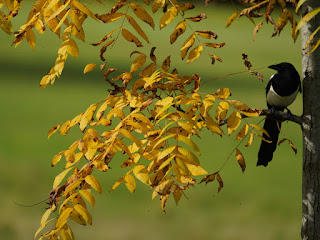
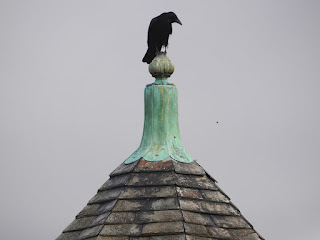

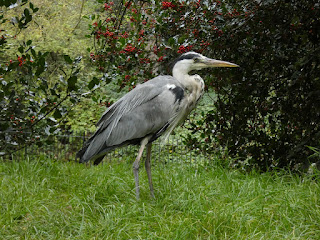

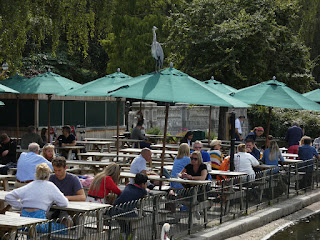



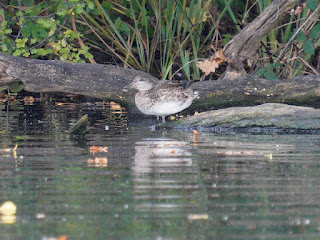


I nearly gasped seeing the Magpie picture. It's utterly gorgeous.
ReplyDeleteHave my hopes about that Heron. Looking forward to its establishing a reign of terror in the Dell restaurant tables.
The Grebe chick's piping does sound a bit like a plover's, right?
The previous heron on the restaurant terrace started invading occupied tables and snatching food off diners' plates. It suddenly disappeared, I fear through human agency.
DeleteThe Collins Bird Guide describes the begging call of young Great Crested Grebes as 'like distant Oystercatcher'. But I don't think I'd ever mistake it for something else.
Suspect the hoverfly is a Platycheirus species. P. albimanus is one of the more common now, but can't be sure if it's this from the photo.
ReplyDeleteLovely shot of the Bombus on the Arbutus-such an attractive plant!
Thanks for further information. Well, Platycheirus albimanus indicated that it has flat white 'hands' or feet, so this insect seems to qualify on both counts.
DeleteI love Buff-Tailed Bumblebees. They may be very common, but the spectacle of these large furry insects nipping around neatly on improbably small wings is irresistible.
Hi Ralph
ReplyDeleteHave finally learnt how to use this facility.!!
This is a trial
Well done, you've achieved visibility.
Delete